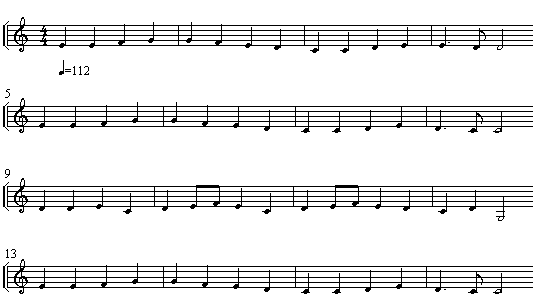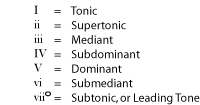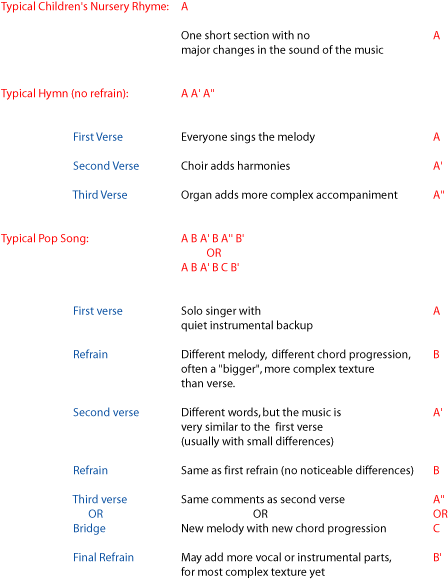Music themes and motifs
A short melodic idea may also be called a motif, a motive, a cell, or a figure. These small pieces of melody will appear again and again in a piece of music, sometimes exactly the same and sometimes changed. When a motif returns, it can be slower or faster, or in a different key. It may return “upside down” (with the notes going up instead of down, for example), or with the pitches or rhythms altered.
The first movement of Ludwig van Beethoven’s Symphony No. 5 has the most famous motive in Western classical music.

The “fate motif” from the first movement of Beethoven’s Symphony Number 5. ( I
remember also his Fur Elise piano masterpiece).
This is a good example of a short melodic idea (a cell, motive, or figure) that is used in many different ways throughout the movement. Most figures and motifs are shorter than phrases, but some of the leitmotifs of Wagner’s operas are long enough to be considered phrases. A leitmotif (whether it is a very short cell or a long phrase) is associated with a particular character, places, thing, or idea in the opera and may be heard whenever that character is on stage or that idea is an important part of the plot. As with other motifs, leitmotifs may be changed when they return. For example, the same melody may sound quite different depending on whether the character is in love, being heroic, or dying.
Siegfried motif from Wagner’s opera The Valkyrie:

In “The Ride of the Valkyrie”, from Wagner’s opera Die Walkuere (The Valkyrie), there are two closely-related motives to listen for; the melody is built on one, and the accompaniment is built on the other. Most of Wagner’s opera music is based on motifs, but there can be so many different motifs being used in one section of the music that they can be difficult to spot unless you are familiar with the opera. If you can’t find “The Ride of the Valkyrie”, try listening to the overture to The Flying Dutchman (Die Fliegende Hollander).
Theme from Beethoven’s Symphony No. 9

The tune of this theme will be very familiar to most people, but you may want to listen to the entire last movement of the symphony to hear the different ways that Beethoven uses the melody again and again.
The musical scores for modern movies and television can also contain melodic themes, which can be developed as they might be in a symphony or may be used very much like operatic motifs. For example, in the music John Williams wrote for the Star Wars movies, there are melodic themes that are associated with the main characters. These themes are often complete melodies with many phrases, but a single phrase can be taken from the melody and used as a motif. A single phrase of Ben Kenobi’s Theme, for example, can remind you of all the good things he stands for, even if he is not on the movie screen at the time.
Other musics based on motives
All of the movements of Holst’s The Planets are highly motivic, but each movement develops several different motives, and some are easier to spot than others. The rhythmic motive in “Mars” is by far the most obvious, but the four-note motive that opens “Uranus” is also very easy to hear. If you use this piece, you may want the further challenge of seeing how many different motives you can hear in a movement, as well as how each of them change. Are the melodic lines based on motives? The five-note “alien message” motif in John Williams’ score for “Close Encounters of the Third Kind” may already be familiar to some students. Many other movie and television scores also include short motifs (see below).
Jazz motives
Not all motivic music is classical in style; from early ragtime tunes like Joplin’s “Maple Leaf Rag”, through big band tunes like “String of Pearls” and “In the Mood”, to the cool jazz of
Miles Davis’ So What in Kind of Blue, to the latest improvised solo, jazz is full of motifs. Listen for the two-note “look down” motive from the work song at the beginning of Les Miserables to return throughout the musical. There are other motives in this musical, too, and in many other musicals (Phantom of the Opera, for example).
Motivic development
Many other classical works are also full of motivic development, particularly works written in the late nineteenth or early twentieth century. Try listening to both the “Waltz of the Snowflakes” and “Coffee (Arabian Dance)” from Tchaikovsky’s The Nutcracker, or to Strauss’ tone poems (“Till Eulenspiegels Lustige Streiche”, for example) or to the orchestral works of Stravinsky (for example, the first movement of the “Symphony in E Flat”) or Dvorak (for example, the first and second movements of his “Symphony No. 9: From the New World”). If a piece has many motifs, you may not be able to keep track of all of them until you have heard the piece several times and are more familiar with it. Start by picking out one motif that you can hear and listening for it, or by simply counting motifs.



